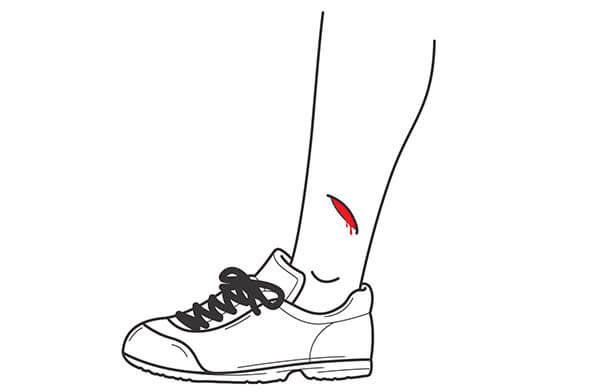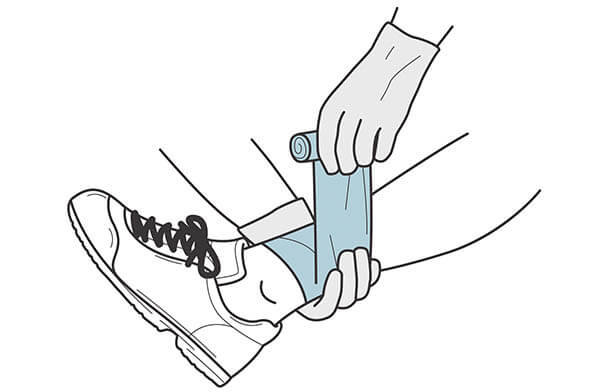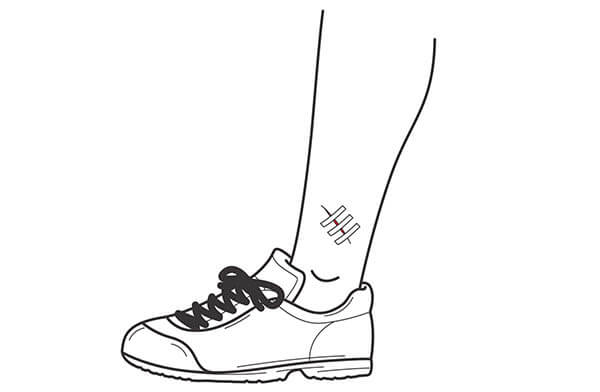Leg wound
It is easy to suffer superficial skin injuries when climbing, such as grazes, cuts or lacerations.
The best way to handle a cut or laceration depends on how heavily it is bleeding. If the wound is bleeding heavily, the situation is life-threatening and a regular dressing will not be adequate. A pressure dressing is required.
Wounds with less bleeding, on the other hand, are not life-threatening and can be attended to with less urgency.

It is important to protect yourself when attending to the wounds of others. Always wear disposable gloves! If the wound is dirty, clean the surface with a compress. Then cover it with a second sterile compress and bandage.
As a first responder you should never attempt to remove or wash out any foreign bodies from the wound of an injured person; this includes grit or small stones. You must not put any ointment, tinctures, antiseptic, sprays or powder on the wound. If blisters develop, the first responder is not authorized to puncture them.
If you are unsure as to whether a wound requires stitches, err on the side of caution and assume it does. The advice of a doctor should be sought within five hours. After this time the edges of the wound begin to heal, making stitching no longer possible.

Steri-Strips: Many climbers carry wound closure strips to deal with cuts and lacerations quickly. These are NOT ordinary adhesive strips, they are designed to close wounds. Only doctors are authorized to close wounds. If you use Steri-Strips while out on a trip, you should seek the advice of a doctor within five hours. The doctor will rinse and clean the wound and close it correctly. This will also help to prevent painful infection or even potential blood poisoning, which can be life-threatening if not identified.


